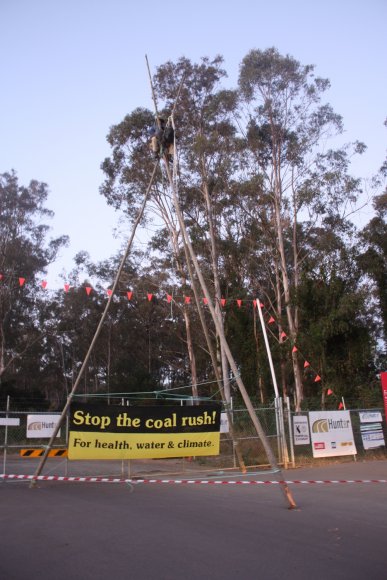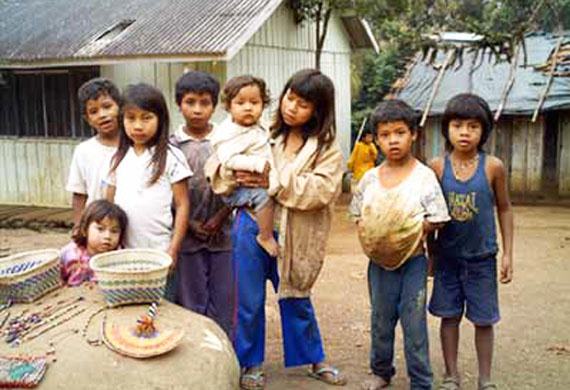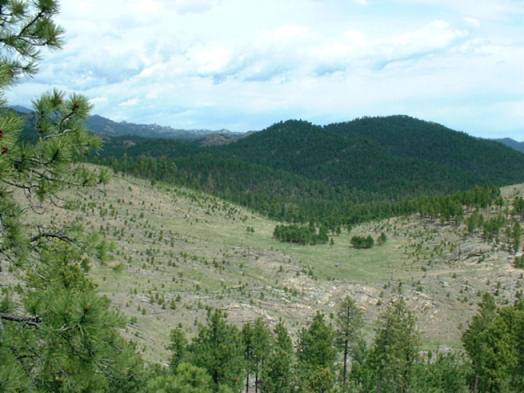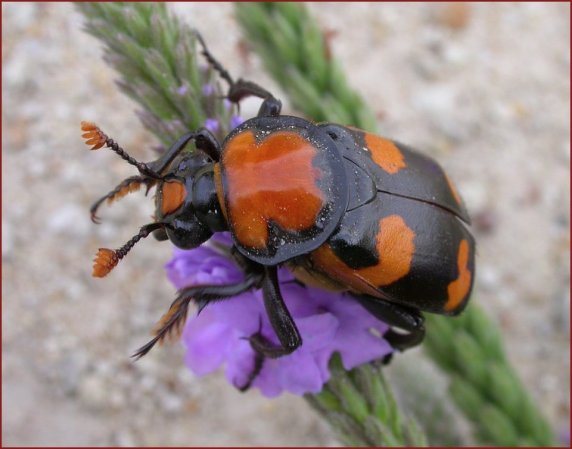
by Deep Green Resistance News Service | Sep 5, 2012 | Mining & Drilling, Obstruction & Occupation
By Rising Tide Australia
Activists entered the Hunter 8 Alliance compound at Rutherford before dawn today, erecting a wooden tripod to block access to the site, which is part of a Federally funded project to increase coal haulage capacity in the Hunter Valley. Activist Ned Haughton scaled the 10 metre high structure, where he remained for the next five and a half hours. Haughton has now been arrested, and will be charged with obstruction.
Steve Phillips, spokesperson for protest organisers Rising Tide, said: “This railway construction project is designed purely for the benefit of coal corporations, yet it is being paid for with taxpayers money.”
“Why are taxpayers dollars being handed over to rich mining corporations, in order to prop up a polluting industry that is destroying human health and the environment?”
“There is a coal rush under way in NSW, and public health, waterways, ecosystems, and the global climate are under assault. Massive coal mine projects, coal haulage projects, and coal port projects are in the pipeline. If all these projects go ahead, the consequences will be devastating.”
Today’s protest follows two consecutive days of community direct action against the Boggabri mine in the Gunnedah Basin – the coal industry’s “new frontier”. A major expansion of the Boggabri coal mine was approved by the NSW Government in July despite huge ecological impacts and overwhelming community opposition.
“We call on State and Federal Governments to abandon their infatuation with mining companies, and their addiction to fossil fuels. It’s time to take a stand and stop this coal rush before it’s too late.”
Key facts.
- The Maitland to Minimbah Third Track project is being constructed by Hunter 8 Alliance, which is a consortium of engineering company GHD, construction company John Holland, and the Federally owned Australian Rail Track Corporation.
- The objective of the project is to lift coal haulage capacity on the Hunter rail corridor to 200 million tonnes per annum. It includes construction of 23km of new rail track, and reconditioning of 9km of existing track.
- The Federal Government granted $114 million, through the ARTC, to the project.
From Rising Tide Australia

by Deep Green Resistance News Service | Sep 4, 2012 | Colonialism & Conquest, Indigenous Autonomy
By Inter-Press Service
The land conflict between the Guaraní-Kaiowá indigenous people and large landowners in the southwestern Brazilian state of Mato Grosso do Sul is a powder keg ready to explode, say observers.
Nísio Gomes, Jenivaldo Vera, Rolindo Vera, Teodoro Ricardi, Ortiz and Xurete Lopes are just a few of the names on a long list of people murdered in this state in recent years, according to the Indigenous Missionary Council (CIMI).
The statistics gathered by the Council, founded in 1972 by the Brazilian National Bishops’ Conference, reveal that 279 indigenous people have been killed since 2003 in land disputes with landowners and ranchers.
The most recent case is that of Eduardo Pires, who disappeared on Aug. 10 when armed men attacked a group of Kaiowá people in the Arroio Korá indigenous reserve, located in the municipality of Paranhos in the south of the state, near the border with Paraguay.
Arroio Korá, an area of roughly 7,000 hectares, was officially recognized as indigenous land on Dec. 21, 2009 by then president Luiz Inácio Lula da Silva. But one week later, a Federal Supreme Court ruling on an appeal filed by a landowner exempted a 184-hectare section of the land from this status.
“Even with this partial embargo, the government did not foresee that the rest would be effectively turned over to the Guaraní-Kaiowá,” said Flávio Machado, the CIMI regional coordinator in Mato Grosso do Sul. “The community, which is made up of around 600 members, currently occupies around 700 hectares. When they decided to retake control over the rest of the land, they met with a violent response,” he told Tierramérica*.
According to Eliseu, a Kaiowá leader who was present when the attack took place, on the morning of Aug. 10 some 400 members of the community set up a camp on a section of the officially recognised reserve land where a ranch is located.
A short time later, a number of armed men arrived. “I heard the gunshots and took off running. We are a people with a culture of peace, we have no weapons, but we are not going to give up fighting for our land. If we are going to die, we would rather die on our own land,” he told Tierramérica.
No one has seen Eduardo Pires since the attack. “I believe he is dead,” said Eliseu.
The Federal Police of Mato Grosso do Sul are in charge of the case. “The indigenous people say that one of them is missing. We are investigating, but we have nothing concrete. We have to be impartial,” Federal Police Superintendent Edgar Paulo Marcon commented to Tierramérica.
The following week, CIMI reports, the police removed a number of ranchers and their cattle from the area. Since then, the Kaiowá have been targeted by threats, the most explicit of which is a filmed declaration by Luis Carlos da Silva Vieira, known as Lenço Preto (“Black Kerchief”), posted on YouTube.
“We are going to organize and prepare for confrontation…They only want the land to be bothersome. We have weapons. If they want war, they’ll get war,” he states repeatedly.
In response, the Kaiowá community published a letter calling for urgent attention from the government. “Faced with a collective death threat, made publicly in the press by the landowners, we request an investigation and severe punishment of these promoters of the genocide/ethnocide of indigenous peoples.”
“Everyone knows that they have sophisticated and fearsome weapons, that they have money obtained at the expense of indigenous blood to buy more weapons and to hire gunmen… We do not have guns and, above all, we do not know how to use them,” the letter continues.
“We want to reiterate and highlight the fact that our fight for our ancestral lands is aimed solely at protecting human life and the fauna and flora of the planet Earth; it is not our intention to kill anyone.”
From Upside-Down World: http://upsidedownworld.org/main/brazil-archives-63/3844-brazil-landowners-declare-war-against-indigenous-guarani-kaiowa-in-mato-grosso-do-sul

by Deep Green Resistance News Service | Sep 4, 2012 | Indigenous Autonomy
By Lakota People’s Law Project and Last Real Indians
Last Saturday, at a press conference in Eagle Butte, South Dakota, Lakota leaders of the movement to secure the Lakota pilgrimage site Pe’ Sla for the Sioux Nation announced that the tribes will purchase the 2000 acres of sacred land in the Black Hills. After several weeks of intense fundraising, the nine tribes raised enough to make a deal with the current owners of Pe’ Sla, Leonard and Margaret Reynolds—though details of the arrangement are still being negotiated. The fundraising effort on the part of the Sioux tribes was begun by Attorney Chase Iron Eyes, and the negotiations were carried out in part by Cheyenne River Tribal Councilwoman Robin Lebeau. Both leaders spoke on Saturday. Saturday’s action was organized by Last Real Indians and the Lakota People’s Law Project, two organizations operating in South Dakota that support the return of the Black Hills to the Sioux.
Saturday’s action was organized by Last Real Indians and the Lakota People’s Law Project, two organizations operating in South Dakota that support the return of the Black Hills to the Sioux. The action took place in front of an enormous banner by artist Shepard Fairey and photographer Aaron Huey which read “The Black Hills Are Not For Sale,” a reference to the U.S.’s current policy of ignoring the Treaty of Fort Laramie (1851). The treaty, unilaterally overturned by Congress in 1877, acknowledged Sioux ownership of the Black Hills. The United States has offered the tribes $105 million (plus interest) since 1979 as compensation for the seizure of the land, but the Sioux have refused it and maintain that the land belongs to them.
Shepard Fairey created the red and blue “Hope poster” for Obama’s 2008 presidential campaign, and Aaron Huey is the photographer who co-created last month’s National Geographic cover story about the Pine Ridge Reservation. The banner art was driven from California to South Dakota by the Lakota People’s Law Project, an organization which works to return Lakota children from state-run foster care to their families and tribes.
Speakers at Saturday’s press conference were Chase Iron Eyes, spokesperson for the Pe’ Sla movement; Robin Lebeau, tribal councilwoman from the Cheyenne River Sioux tribe; Madonna Thunder Hawk, activist and tribal liaison for the Lakota People’s Law Project; Phyllis Young, activist and tribal councilwoman for the Standing Rock Sioux tribe; and Joe Brings Plenty, former tribal council chairman for the Cheyenne River Sioux tribe.
Iron Eyes described the process by which his organization, Last Real Indians, conducted a fundraising effort to save Pe’ Sla, raising $300,000. This sum was combined with $1.3 million put forth by the Rosebud Sioux tribe, enough to seal the land deal. Mr. Iron Eyes, an attorney in his mid thirties, discussed the teachings concerning the Black Hills that he received from his elders a a youth: “Its back, we’re talking about the Black Hills again, and it’s the right time for it to happen.” Councilwoman Lebeau, also under forty, described the complicated negotiations by which the tribes acquired the land. She implored the tribes to come together: “What I want to stress is unity… All I am asking for you [Sioux] to do is to take [the idea of Pe’ Sla] back to who whomever your spiritual leaders are—your treaty councils, your IRAs—and let’s come together.” Thunder Hawk talked of the importance of land possession to Sioux identity, saying “The land the priceless. The land is who we are. That’s why we still are who we are, because we have a land base…It doesn’t matter how much money the tribes have to put up for Pe’ Sla. We have to have it.” Councilwoman Young, who participated in the conference calls during which the land deal occurred, thanked both her fellow Sioux negotiators and the Reynolds family for obliging Sioux appeals. “As we continue to renew our belief systems and ceremonies, we urge our people to…continue as human beings to contribute and share our lifesystems with the world…so that Pe’ Sla becomes a universal symbol of peace everywhere.” Former tribal chairman Brings Plenty discussed the Sioux struggle for self-empowerment and the role that land plays in it. “This Pe’ Sla movement, it is a victory.”
The organizers of Saturday’s press conference are holding a rally in Rapid City this Wednesday, September 5, to celebrate the purchase of Pe’ Sla. It will be at the Memorial Park Band Shell at 5 PM.
From Intercontinental Cry: http://intercontinentalcry.org/lakota-announce-new-deal-with-landowners-for-the-return-of-pe-sla/

by Deep Green Resistance News Service | Sep 3, 2012 | Movement Building & Support
By Ben Barker / Deep Green Resistance Wisconsin
“There have been others also just as true and devoted to the cause…with such women consecrating their lives—failure is impossible!”—Susan B. Anthony
As an activist and organizer, I concern myself with the work of getting people together to change the world. A necessary part of this is striving to see activists bringing all of their respective gifts and forms of commitment to the table. With strong ties between strong hearts, the path to lasting social change is begun and sustained.
My time as an activist has shown me that connecting to and keeping relationship with allies is an invaluable aspect of movement-building. For some years, I have tried to organize in my local community. Here lives a diverse array of strong-hearted activists with gifts that, while amazingly unique, serve to mutually support each others’ efforts. There are herbalists, musicians, writers, environmentalists, socialists, feminists, gardeners, and political organizers, all of whom work towards a more sane and just society. The hope I’ve placed in the power of all of them coming together does pay off, though it is no small task to help guide the momentum into fruition.
A more immediately gratifying example of this has been my experience in working with the international social justice and environmental movement called Deep Green Resistance (DGR). For the year and a half that I’ve been involved with DGR, I have witnessed discipline, strategy, and character on the part of it’s members that is deeply impressive. Further, I’m honored to work on the organization’s staff, and as part of this interviewing many potential recruits. It has not been lost on me that, while most who want to join share the same basic goal of liberating the earth from industrial civilization, each brings wildly unique gifts to put to use along the way.
The background of activists within Deep Green Resistance varies as well. As the organization states, “DGR is made up of writers, community organizers, janitors, parents, grocery clerks, musicians, feminists, teachers, farmers, dishwashers, artists, caregivers, laborers, and students.” I often work with members on projects, and I am aware and in awe of the beautiful and dynamic lives each lead, of which their work in the movement is but one part.
Sometimes, I worry about losing connection with these allies. My knowledge of the incredible possibilities of what we can make happen by working together carries with it also the truth that we could once again be separated and isolated from one another. Indeed, between working jobs to pay rent, raising children, and tending to personal hobbies, it can prove hard for some to find time for involvement in the activities of DGR.
So, I try to hold on tight. I ask, is it our communication tools that need adjusting? Are people being treated well? What should be done to retain them and engage them? Clearly, these questions can be overwhelming for one person to grapple with and rarely do answers do emerge simply because they are summoned.
This yearning to keep intact the community is present every single day and enough so that I eventually began formulating a response that is at least partially adequate. I tell myself: People come for the fight, but stay for the culture. The task of organizers then becomes creating a healthy culture of resistance for the fighters to live within.
Those who seek out Deep Green Resistance are usually not lacking in a will to fight, as one might guess by the movement’s name. The explicit goal of DGR is to “deprive the rich of their ability to steal from the poor and the powerful of their ability to destroy the planet.” This is not the place for those with feeble politics or wills. But, while DGR seems to offer a place for the warrior inside us, we must ask also if it is welcoming to loving human beings. Friendship is a cornerstone to any healthy community, and it will take these bonds, these strong ties, to do this intensive work alongside each other.
In the end, I cannot force anyone to stay in the movement, or to use their gifts in a particular way. I wouldn’t want to, anyways. They will stay if they want; if the community is healthy and has the potential to really effect change, they likely will stay. So, I ask you, my comrades, what is it that makes this culture of love and rage, this tightly-knit community that can fight back against the dominant culture and win. How can we encourage this and turn it into reality? Throughout every day of doing this work, I will also ask myself these questions. As long as it takes.
From Kid Cutbank: http://kidcutbank.blogspot.com/2012/08/as-long-as-it-takes-strong-ties-strong.html

by Deep Green Resistance News Service | Sep 1, 2012 | Biodiversity & Habitat Destruction
By Zoological Society of London
One fifth of the world’s invertebrates may be heading for extinction according to ‘Spineless’, a report published today (Friday 31st) by the Zoological Society of London (ZSL), in conjunction with IUCN and the IUCN Species Survival Commission.
Digging up earthworms, chasing butterflies and collecting clam shells could become a thing of the past if enough isn’t done to protect invertebrates. And if they disappear, humans could soon follow. These critters form the basis of many of the essential benefits that nature provides; earthworms recycle waste nutrients, coral reefs support a myriad of life forms and bees help pollinate crops.
More than 12,000 invertebrates from the IUCN Red List of Threatened Species were reviewed by conservation scientists who discovered freshwater species to be under the highest risk of extinction, followed closely by terrestrial and marine invertebrates. The findings from this initial group of global, regional and national assessments provide important insight into the overall status of invertebrates. Together they indicate that the threat status of invertebrates is likely very similar to that of vertebrates and plants.
Invertebrates are at risk from a variety of threats. Molluscs such as thick shelled river mussels suffer from pollution from agricultural sources and dam construction, which affects the quality of the water they live in. Crayfish such as the noble crayfish, are at risk from the impact of invasive species and diseases. What starts off as a local decline could lead to a global extinction, and recognising the growing pressures on invertebrates is critical to informing more effective conservation.
Dr. Ben Collen, head of the Indicators and Assessments unit at ZSL says: “Invertebrates constitute almost 80 per cent of the world’s species, and a staggering one in five species could be at risk of extinction. While the cost of saving them will be expensive, the cost of ignorance to their plight appears to be even greater”.
The highest risk of extinction tends to be associated with species that are less mobile and are only found in small geographical areas. For example, vertebrate amphibians and invertebrate freshwater molluscs both face high levels of threat – around one third of species. In contrast, invertebrate species which are more mobile like dragonflies and butterflies face a similar threat to that of birds, and around one tenth of species are at risk.
ZSL’s Director of Conservation, Professor Jonathan Baillie added: “We knew that roughly one fifth of vertebrates and plants were threatened with extinction, but it was not clear if this was representative of the small spineless creatures that make up the majority of life on the planet. The initial findings in this report indicate that 20% of all species may be threatened. This is particularly concerning as we are dependent on these spineless creatures for our very survival.”
Read more from Zoological Society of London: http://www.zsl.org/conservation/news/invertebrates-on-the-brink,993,NS.html





